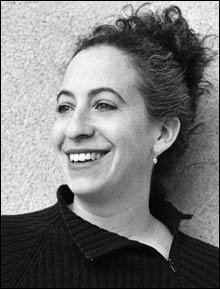
STRANGE RED COW: Bader reads history through classified ads. |
Here’s a selection of non-fiction books that the Phoenix liked this year, in alphabetical order by author.1 Sarah Bader | Strange Red Cow: And Other Curious Classified Ads From The Past | Clarkson Potter | Zooming in on life’s random ephemera, classified ads can, it turns out, reanimate the past like nothing else. They can tell you what people valued or wanted, whether it was to locate a lost green parrot that “speaks Spanish like a native” or to hire “a young lady of German parentage” who “must be a 36 bust and understand bookkeeping on a small scale.” Bader links the minutiae of ads with the larger doings of history (information-wanted postings and the Irish potato famine of the 1840s, for instance). And, of course, there’s always the “chance encounter” — identical in content, if not method, in the Boston Transcript of 1866 and on craigslist.
2 Taylor Branch | At Canaan’s Edge: America In The King Years 1965-68 | Simon & Schuster | The final book in Branch’s epic trilogy following the parallel biography of Dr. Martin Luther King and the civil-rights movement is no less compelling for our awareness of where it’s all headed: to that balcony on the Lorraine Motel in Memphis in April 1968. At Canaan’s Edge is harrowing from the start, as King — already under a cloud of death threats — begins gearing up for the march on Selma. Aside from being a clear rendering of a complex history, Branch’s books are a reminder of how much even one person can accomplish.

3 Ken Dornstein | The Boy Who Fell Out Of The Sky: A True Story | Random House | Dornstein, a series editor at PBS’s Frontline, tells the story of his older brother David, who died in the bombing of Pan Am Flight 103 over Lockerbie. David’s great ambition was to be a writer, and the book is filled with excerpts from his many notebooks and loose pages — it becomes in part a chronicle of David’s fantasized achievements. But it’s also Ken’s story, his struggle with his brother’s legacy, and a mechanistic performance of what Freud called “the work of grief.”
4 Robert Gardner | The Impulse To Preserve: Reflections of a Filmmaker | Other Press | This book of photos and text by the long-time former director of Harvard’s Carpenter Center for the Visual Arts chronicles his life as a “non-fiction filmmaker.” As he reflects on the making of films like Dead Birds (set among the Dani people of Papua, New Guinea) or Passenger (about abstract painter Sean Scully), he delves into the illusionist nature of the documentary art, in which scale is deceptive, time is manipulated, and the worlds he has filmed so beautifully disappear even as his camera rolls.

AFTERMATH: Meyerowitz’s chutzpah got him access to Ground Zero. |
5 Joel Meyerowitz | Aftermath: World Trade Center Archive | Phaidon | Meyerowitz — a once-wily street photographer, best known these days for his meditative shots of Cape Cod — showed chutzpah in getting himself admitted to the restricted “crime scene” of the Twin Towers aftermath and clean-up to create this book of 400 photos (out of more than 8000 that he took). Billed as the only comprehensive photographic record of the work at Ground Zero, it’s as big and heavy as a tombstone, and one of the few artifacts that conveys the scope of the devastation.
6 Seth Mnookin | Feeding The Monster: How Money, Smarts, and Nerve Took a Team to the Top | Simon & Schuster | Mnookin, a Vanity Fair contributing editor (and former Phoenix contributor), spent more than a year behind the scenes at Fenway Park, during which he had unfettered access to all layers of the Red Sox organization. Covering the tumultuous 2005 season, he lays bare the workings of one of the biggest and most beloved franchises in sports. At the same time, one of his central theses is that, despite the three-ring-circus atmosphere and incendiary fan interest, this is in many ways — sorry, folks — just another baseball team.
7 Tom Piazza | Why New Orleans Matters | Regan/HarperCollins | Novelist and critic Piazza is a New Orleans transplant (he moved there in 1994), and he knows how to focus on the tourist-accessible pleasures of the Crescent City. But his book is a real argument, laid out to build a case. He woos us with favorite music and food, then moves into an analysis of the primal importance of such pleasures, meanwhile giving vivid portraits of New Orleanians, from Mardi Gras Indian chiefs to gas-station attendants. That he is preaching to the converted — who else will read this book? — matters little.